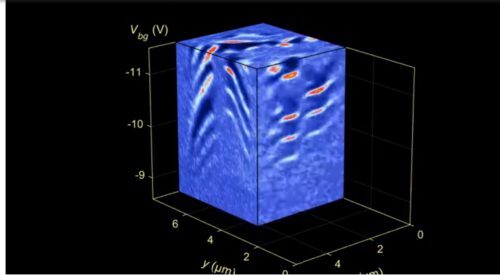On a new type of disorder: "The electrical properties of the material depend to a large extent on the exact twist angle. In other words, areas with different twist angles should be treated as different materials connected to each other" "The electrical properties of the material depend to a large extent on the exact twist angle. In other words, regions with different twist angles should be treated as different materials connected to each other

The discovery of graphene about 15 years ago was the first step in an unfolding revolution in the world of materials engineering. The use of these two-dimensional sheets of carbon atoms makes it possible today to engineer materials with a high level of precision and to give them unique properties in ways that did not exist before. About two years ago, scientists from the Massachusetts Institute of Technology (MIT) discovered another "twist" in the plot: they created a material from two layers of graphene, with the upper one slightly rotated relative to the second at a "magic angle" of a little more than one degree. While a monolayer graphene sheet behaves as a semi-metal, the magic angle made bilayer graphene a superconductor. The dramatic changes in the electrical properties as a result of small changes in the twist angle led to the foundation of a new field of research, which was nicknamed "twisttronics". Recently, researchers from the Weizmann Institute of Science teamed up with the research group from MIT to reveal the physics behind "twisttronics". Btheir joint work The researchers identified a new type of disorder - a discovery that may advance research in the field.
Research student Aviram Uri and Dr. Samir Grover from the group of Prof. Eli Zaldov In the Department of Condensed Matter Physics at the institute, the research was led alongside Yuan Sao and his colleagues from the research group led by Prof. Pablo Herrio-Herrero at MIT. The double graphene sheets were prepared for an experiment at MIT and sent from there to the Weizmann Institute, where they were studied using a scanning microscope based on a device called Scanning SQUID-on-a-tip - an extremely sensitive magnetometer with nanometer resolution developed in Prof. Zeldov's laboratory , and makes it possible to measure the flow of electrons in "magic angle graphene". First, the researchers discovered that the electrons move through the material in narrow and "preferred" paths reminiscent of quantum "edge states" that Prof. Zaldov and his team had already identified in previous experiments with graphene. However, surprisingly, the edge states did not appear as expected from their name at the edges - but in the center of the sample. The solution to the puzzle, says Prof. Zaldov, is that these currents do move at the edges, but these are the edges of distinct regions within the material, each of which is characterized by a slightly different twist angle.
"The electrical properties of the material depend to a large extent on the exact twist angle. In other words, regions with different twist angles should be treated as different materials connected to each other
Later, the researchers discovered that even when aiming for a certain twist angle during the production of the material, efforts and random deformations lead to changing twist angles - and to the creation of a complex and uneven structure. Tracking the exact locations of the edge states allowed the researchers to construct spatial maps of the local twist angles with unprecedented resolution and accuracy. These maps reveal a complex landscape pattern of valleys, peaks and saddle points.
"The electrical properties of the material depend to a large extent on the exact twist angle. In other words, areas with different twist angles should be treated as different materials connected to each other," Uri explains. This new perspective has far-reaching consequences: Prof. Zaldov's research group showed that the gradual change in the twist angles leads to the formation of strong internal electric fields that do not behave as expected, given the metallic nature of the material. Moreover, these fields can be adjusted and increased significantly - simply by changing the electron density in them; Unlike electric fields that are created as a result of charge disorder, these electric fields reflect a fundamentally new type of disorder - "twist angle disorder" - which affects the properties of the electrons themselves. For example, the charge carriers change their mass as they pass through different regions of the material.
Although the superconductivity was observed at extremely low temperatures, the findings may open new avenues of research that will make it possible to understand "high temperature superconductors", which operate at a temperature of about 100 degrees Kelvin (minus 173 degrees Celsius), and even lead the way to creating good superconductors more, which can operate at a temperature closer to room temperature. In addition, this "twisttronic" material is already receiving a lot of attention due to its unique properties, and it may be used in the near future in various applications, for example, to create thin charge separation layers for solar devices.
